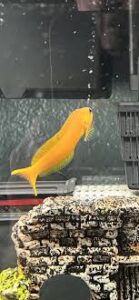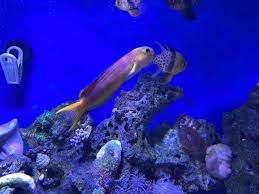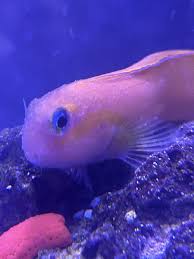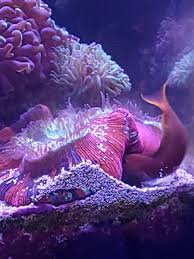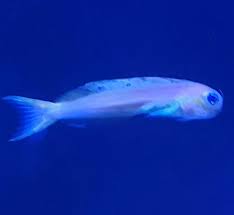Dragons and Their Connection to Deities in Chinese Culture
In Chinese mythology and spiritual beliefs, the dragon (龙, lóng) is one of the most revered and powerful symbols, often seen as a bridge between the human world and the divine. Unlike the fire-breathing, menacing dragons of Western folklore, the Chinese dragon is a benevolent and celestial being, associated with wisdom, power, prosperity, and cosmic balance. Throughout Chinese history, dragons have been linked to gods, spirits, and legendary figures, serving as divine messengers, protectors, and manifestations of celestial power.
This article explores the relationship between dragons and deities in Chinese culture, including their role in mythology, religious practices, imperial beliefs, and spiritual traditions.
1. Dragons as Divine Beings in Chinese Mythology
1.1 The Celestial Dragon as a Messenger of the Gods
In ancient Chinese cosmology, dragons were seen as celestial creatures dwelling in the heavens, seas, and sacred mountains. They were considered messengers of the gods, carrying divine will between the mortal and spiritual realms.
- The Dragon and the Jade Emperor (玉皇, Yù Huáng)
- The Jade Emperor, the supreme ruler of heaven, was believed to have control over celestial dragons, who acted as his loyal enforcers and guardians of the cosmic order.
- Dragons were often depicted in the imperial courts of heaven, guarding sacred artifacts and guiding heavenly beings.
- The Four Dragon Kings (龙王, Lóng Wáng)
- These four deities ruled over the four seas: the East, West, North, and South.
- Each Dragon King controlled water, rain, and weather, ensuring balance in nature.
- They were often worshipped by fishermen, farmers, and sailors, who depended on their blessings for protection and prosperity.
These celestial roles of dragons solidified their position as divine beings closely linked to gods and the elements.
1.2 Dragons as Manifestations of Taoist and Buddhist Deities
Dragons are also deeply connected to Taoist and Buddhist traditions, often appearing as divine manifestations of enlightened beings.
- Dragons in Taoism
- The Yellow Dragon (黄龙, Huáng Lóng) is a sacred Taoist symbol representing wisdom, transformation, and spiritual enlightenment.
- Taoist sages, such as Laozi, were sometimes depicted riding dragons into the heavens, symbolizing their ascension to immortality.
- The concept of the “Dragon’s Qi” in Taoist geomancy emphasizes harmony with nature and cosmic energy flow.
- Dragons in Buddhism
- In Buddhist mythology, dragons are often seen as protectors of sacred texts and relics.
- Nāgas (龙族, Lóng Zú), serpent-like dragon deities in Buddhism, are believed to have safeguarded the teachings of the Buddha.
- The Dragon King in Buddhist lore is said to have offered the Prajñāpāramitā scriptures to Bodhisattva Nagarjuna, highlighting their role as keepers of divine wisdom.
Through Taoism and Buddhism, dragons became symbols of spiritual power, wisdom, and the eternal cycle of life.
2. The Imperial Dragon: The Divine Right to Rule
2.1 The Dragon as the Emblem of the Son of Heaven
For centuries, Chinese emperors were seen as the earthly representatives of the heavens, often called the “Son of Heaven” (天子, Tiānzǐ). The dragon became the ultimate symbol of imperial authority, reinforcing the emperor’s divine right to rule.
- The Five-Clawed Dragon (五爪龙, Wǔ Zhǎo Lóng)
- Only the emperor could use the five-clawed golden dragon as his personal emblem.
- This dragon was featured on imperial robes, palaces, and thrones, signifying the ruler’s connection to divine power.
- Ordinary people were forbidden from using this dragon motif, and violating this rule was considered an act of treason.
- The Dragon Throne and Forbidden City
- The emperor’s throne was called the Dragon Throne, emphasizing his cosmic authority.
- The Forbidden City in Beijing was designed with dragon imagery, reflecting the emperor’s sacred status.
- Every New Year, grand dragon processions took place to honor the emperor’s divine mandate, linking him to heavenly forces.
2.2 The Emperor as a Living Dragon
Many Chinese rulers claimed to be incarnations of dragons, reinforcing their supernatural legitimacy.
- The First Emperor, Qin Shi Huang (秦始皇), declared himself a descendant of the celestial dragon, giving him absolute rule over China.
- The Ming and Qing dynasties incorporated dragon motifs into official ceremonies, ensuring that the emperor was seen as a divine guardian of the people.
The association of dragons with imperial rule further cemented their status as divine creatures tied to gods and cosmic order.
3. Dragons in Chinese Religious Rituals and Worship
3.1 Dragon Worship in Temples and Shrines
Across China, temples dedicated to dragon deities are widespread, reflecting their importance in religious practices.
- Dragon King Temples (龙王庙, Lóng Wáng Miào)
- Built near rivers, lakes, and coastal regions, these temples were dedicated to praying for rain and protection from floods.
- Offerings such as incense, rice, and golden paper dragons were made to seek the Dragon King’s blessings.
- Heavenly Dragon Temples in Taoism
- These shrines were constructed on sacred mountains, believed to be homes of celestial dragons.
- Taoist monks conducted rituals to communicate with dragon spirits, ensuring harmony between heaven and earth.
Worshipping dragon deities remains an integral part of Chinese religious culture, blending mythology with spiritual devotion.
3.2 The Role of Dragons in Religious Festivals
Several major Chinese festivals feature dragons as spiritual protectors and bringers of prosperity.
- The Dragon Dance in Lunar New Year
- This dance is performed to ward off evil spirits and bring blessings for the coming year.
- The dragon’s sinuous movements symbolize cosmic flow and divine energy.
- Dragon Boat Festival (端午节, Duānwǔ Jié)
- Originally linked to rituals honoring the Dragon Kings, this festival is now associated with Qu Yuan’s legend.
- Rowing dragon-shaped boats is believed to appease river dragons and ensure favorable weather.
These rituals and festivals demonstrate how dragons remain deeply intertwined with religious traditions and spiritual practices.
Conclusion
Throughout Chinese history, dragons have maintained a sacred connection to the divine, serving as messengers, protectors, and manifestations of celestial power. From the Dragon Kings controlling the elements to imperial rulers claiming dragon heritage, these majestic creatures have played a crucial role in mythology, religion, and governance.
Even today, dragons continue to symbolize spiritual wisdom, cosmic balance, and divine authority, making them an enduring part of Chinese cultural and religious identity. Their presence in temples, festivals, and folklore ensures that the legacy of dragons and their link to the gods remains unbroken, inspiring generations to honor their mystical power.

